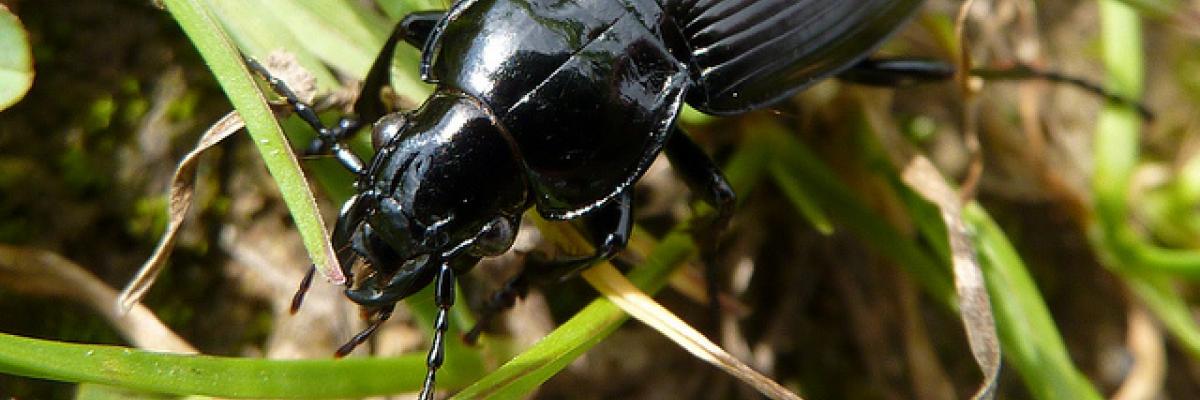

Beetles you can bank on
(The Organic Grower - No 32 Autumn 2015, pp. 14-15)
Download the PDF
Beetle banks, particularly common with cereal growers, can benefit your agricultural holding by increasing biodiversity; providing nesting and foraging habitats for insects, mammals and birds, and pest control benefits (providing over wintering habitats for predatory insects and spiders). You can obtain funding for them in the UK through the Countryside Stewardship scheme.
This article, published in the Organic Grower, written by Iain Tolhurst (see his Farmer Profile), provides lots of practical information on the function and creation of beetle banks, based an extensive first-hand experience. It covers the ideal dimensions and placement of beetle banks and the various benefits you can gain from incorporating them into your farm. It describes the two ways in which you can establish them (natural regeneration and sowing in situ) with links made to the author’s own experience, and issues surrounding maintenance that you will need to consider such as when to cut them and weeding.
- It is suggested that the ideal width of beetle banks is 2 metres, and that they are placed far enough apart to encourage beneficial insects to move out to crops when they are needed.
- Beetle banks can also be used as field margins and to connect cropping areas directly to hedges and any wild areas surrounding your fields.
- The benefits of reducing pest problems can balance up the disadvantage of loss of land. There is an additional benefit they can bring of creating a reserve of permanent carbon, helping offset some of your carbon footprint.
- If opting to establish beetle banks using natural regeneration (effective if your soil has retained much of the original seed bank), you will find that the strip will reach a natural equilibrium and become rich with floral diversity after several seasons. If sowing in situ, you will need to sow indigenous types of wild flowers and grasses suitable for your soil type. Perennials and a range of plant heights are also advised.
- It is not always necessary to mow a beetle bank, particularly if there is the possibility that you may want to return it to active crop production (and retain fertility) in the future.
